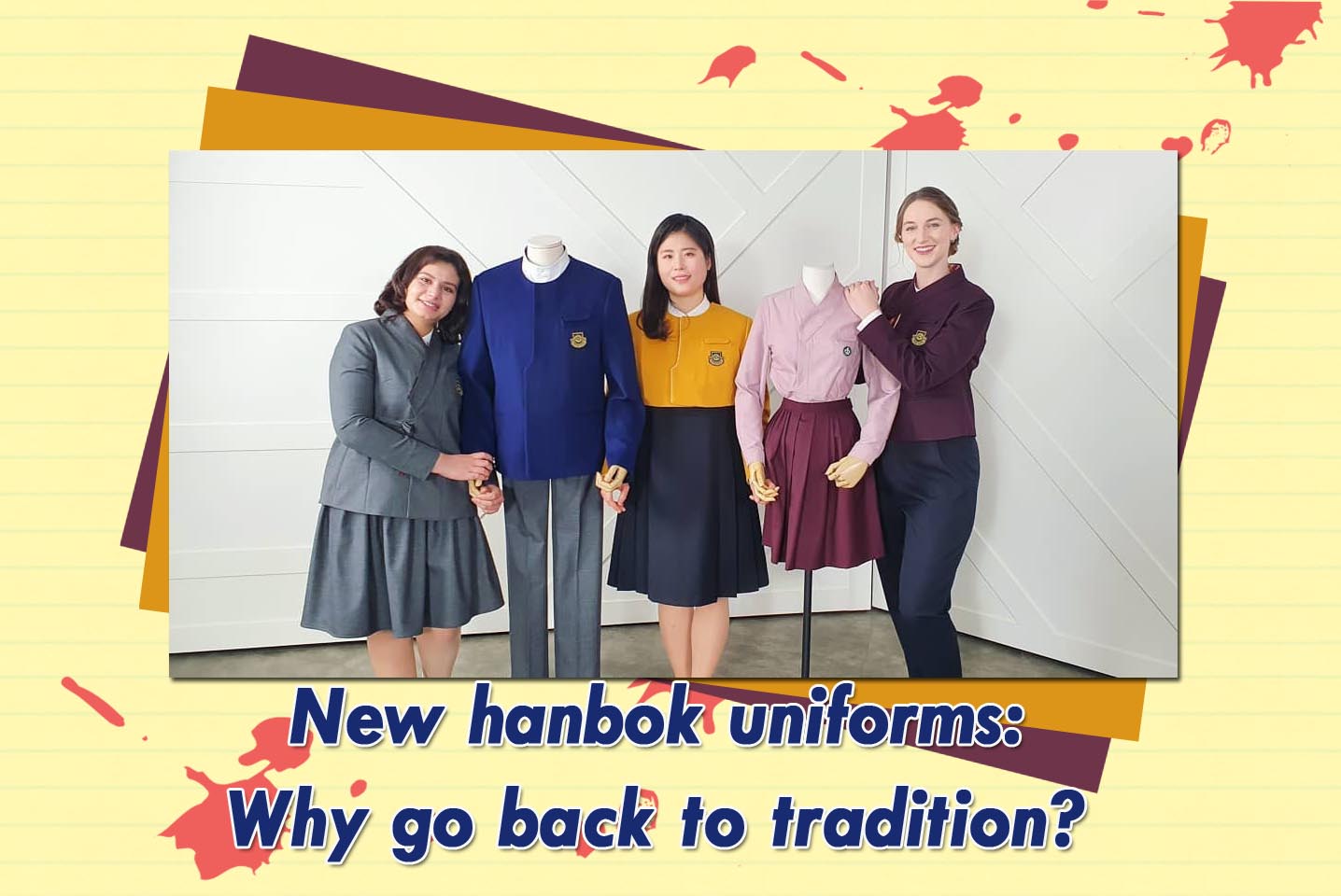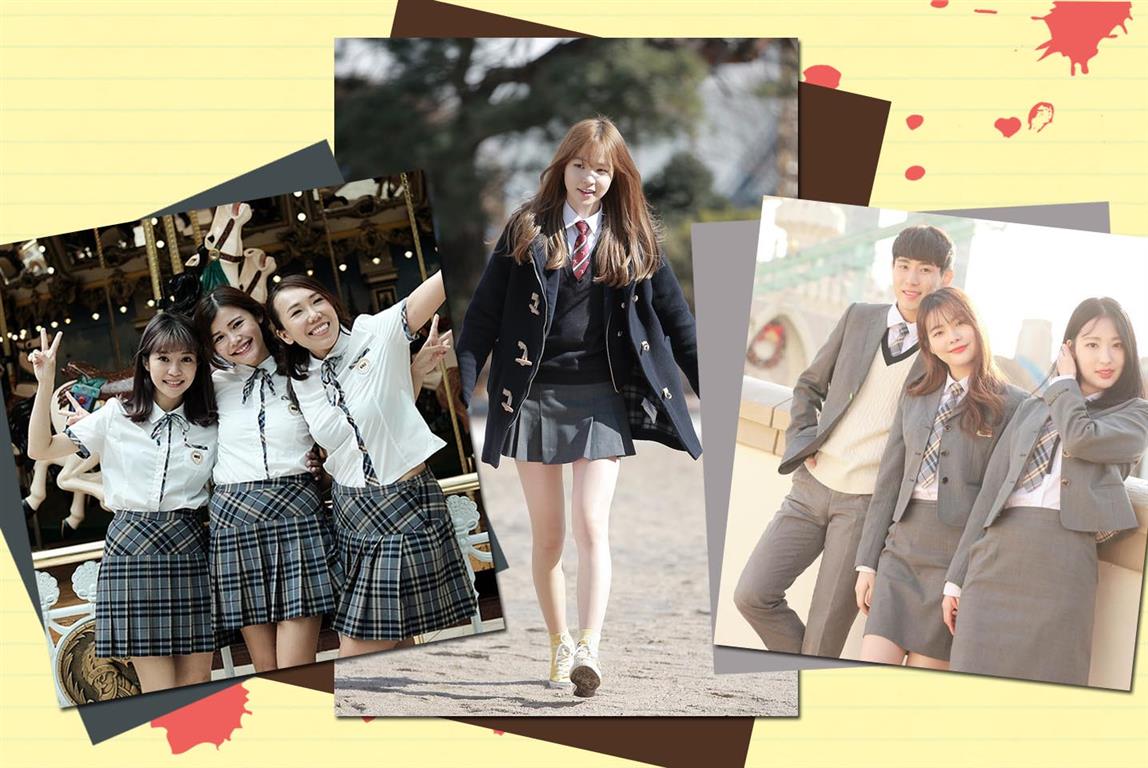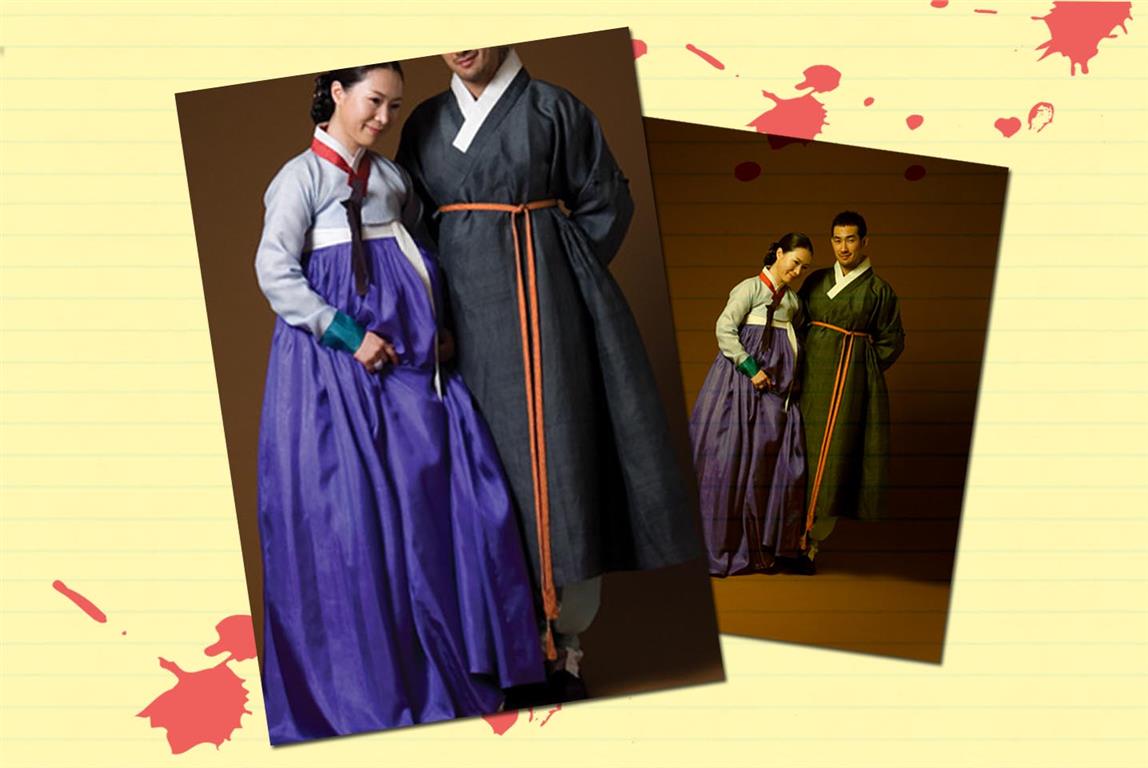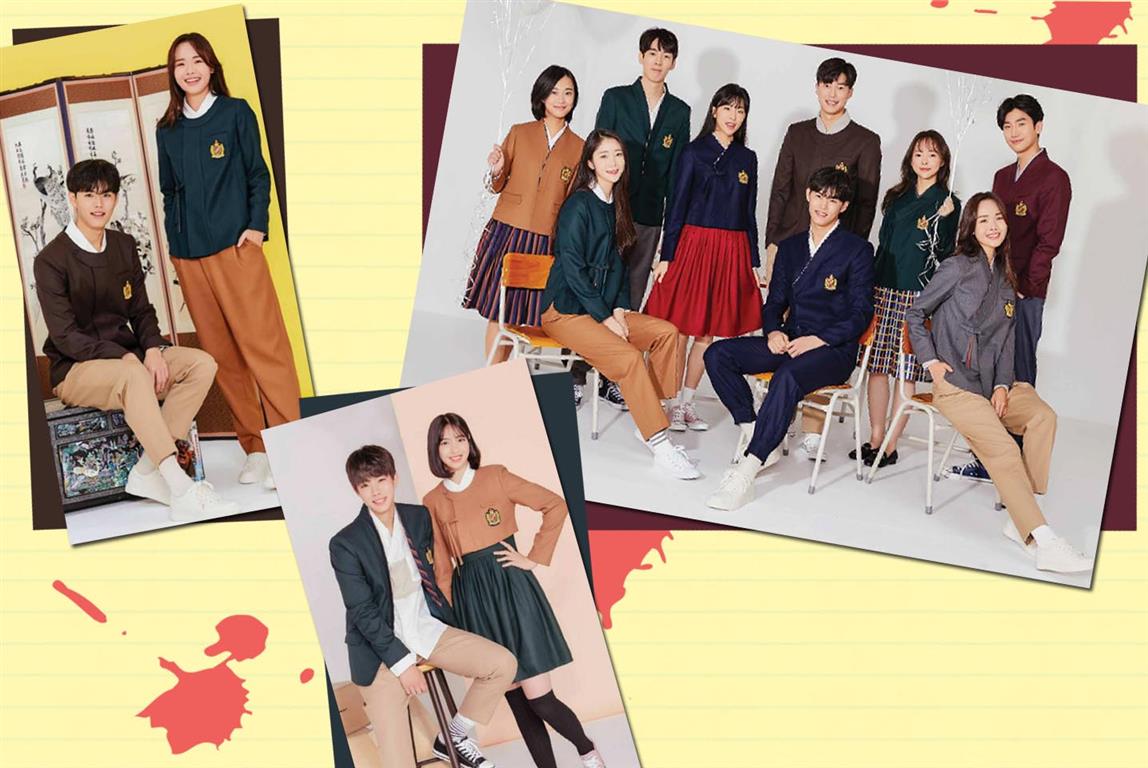- 한국어
- English
- 日本語
- 中文
- العربية
- Español
- Français
- Deutsch
- Pусский
- Tiếng Việt
- Indonesian
By Honorary Reporter Dayviana Diaz from Cuba
Photos = Dayviana Diaz

Korea is making Hanbok-style school uniforms to keep the traditional attire alive and relevant in today's society.
In Korea, almost all students in high school must wear uniforms, which vary by region, school and grade.

School uniforms have undergone changes in design, more recently tilting toward modern. (Wikipedia and Flickr. edited by Dayviana Diaz)
The global Hallyu boom has brought keen attention to uniforms designed with Hanbok aesthetics thanks to their appearance in Korean dramas and K-pop stars wearing them.
Origins
Hanbok was initially used as a school uniform in the late 19th and early 20th centuries during the Joseon Dynasty era. In a first for girls, Ewha Hakdang (now Ewha Womans University) in 1886 required a red jeogori (Hanbok upper garment) and a cotton skirt for students, with a heavier version for the winter. For boys, their first uniform used came in 1898 at Paichai Hakdang School, an institution for boys. This uniform was modeled after Japanese school uniforms and consisted of pants, a hat and red bands around the sleeves.
What was called yangjang originated in 1907 at Sookmyung Women's University and consisted of a one-piece purple twill garment with a pink cap and heels. The black durumagi (overcoat) was also used from 1904 as a uniform with a black belt and hat inscribed with the words "Hansung" at Hansung High School. Afterwards, the uniforms took on a Western flavor along with Japanese influence on Korean society, thus the Hanbok touch was lost.

Hanbok and durumagi (overcoat) were used as uniforms in the late 19th and early 20th centuries in Korea. (Wikipedia, edited by Dayviana Diaz)
From modern to traditional
For many years, schools and students in Korea complained about uniform sizes and designs. The uniforms were even said to exploit the female figure through forcing gender norms in their designs and limiting female mobility, while some even went so far as saying they sexualized the images of young women.
In July 2018, President Moon Jae-in ordered his staff to make such uniforms more practical and comfortable. The Ministry of Culture, Sports and Tourism has since sought to create better uniforms, and decided to return to tradition by basing the designs on Hanbok.
The Hanbok Advancement Center under the Korea Craft and Design Foundation and other groups have worked with the aforementioned ministry and the Ministry of Education to promote the use of traditional Hanbok in everyday life.
In 2019, both ministries signed an agreement on a trial project to introduce Hanbok-style uniforms at select middle and high schools. This venture started last year with 22 schools participating, and 16 nationwide have since adopted such uniforms.

Select schools in Korea have adopted Hanbok uniform designs with a modern touch.
New designs
Inspired by the beauty of traditional costumes, Hanbok-style uniforms feature fresh and colorful designs made with resistant materials. Jacket collars have been inspired by the jeogori (blouse or jacket), with a git (collar) where the left part closes on the right. The loose chima (skirt) has characteristic pleats allowing fluidity in movement.
Girls can also choose from skirts, underskirts, shorts and pants. For boys, the pants are a mixture of Western style and the comfortable and loose touch of Hanbok baji (pants). This new design even extends to physical education clothes that allows flexibility and mobility when moving around.
enny0611@korea.kr
*This article is written by a Korea.net Honorary Reporter. Our group of Honorary Reporters are from all around the world, and they share with Korea.net their love and passion for all things Korean.